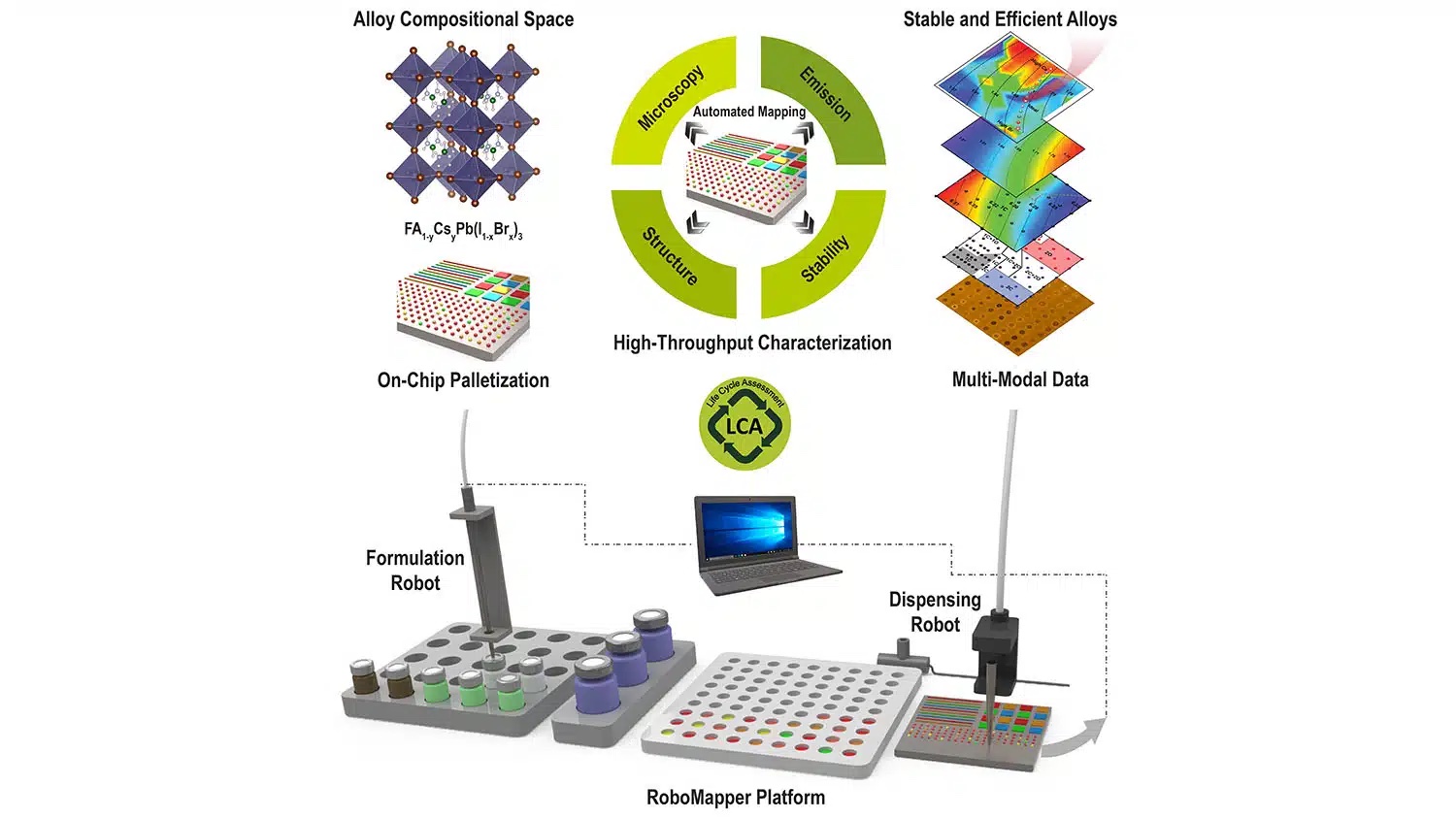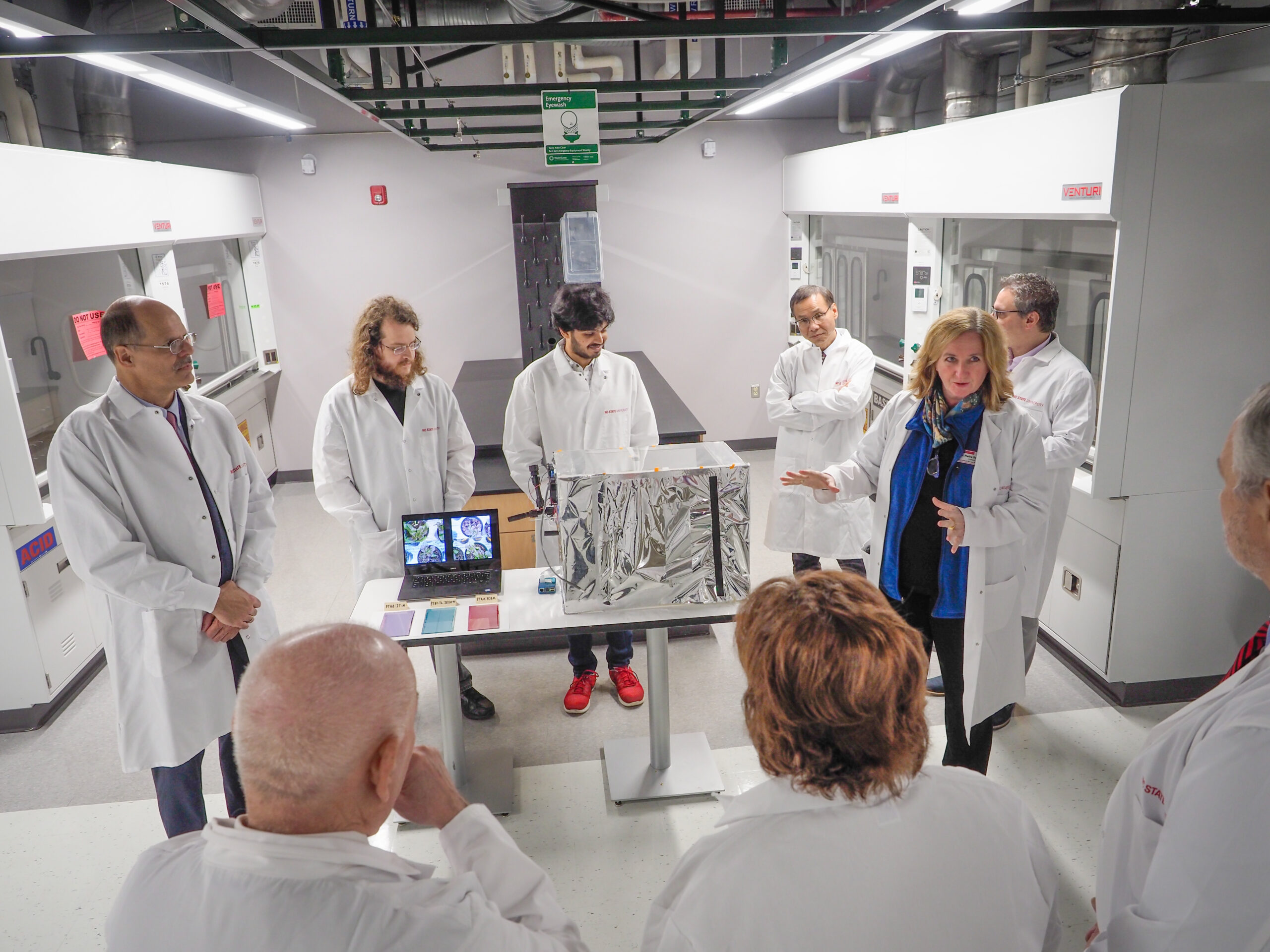Prof. Thomas Kirchartz speaks at TOSCA/ORaCEL joint meeting on 2/16/2021
Recombination and the Concept of Charge Carrier Lifetimes in Lead-halide Perovskites
[ezcol_1half]Prof. Thomas Kirchartz
IEK-5 Photovoltaik,
Forschungszentrum Jülich
Email: t.kirchartz@fz-juelich.de
Group Website
[/ezcol_1half] [ezcol_1half_end]
Date: Tuesday, February 16, 2021
Zoom meeting link: : https://ncsu.zoom.us/j/91011940697
Time: 9:00 AM (EST).[/ezcol_1half_end]
Abstract
Both transient and steady state photoluminescence PL have been frequently used to analyze the properties of halide perovskite films[1,2] and recently also layer stacks, i.e. films with interfaces.[3-5] Here, we present our current level of understanding of how to analyze the data. In the case of films, long decays in transient PL correlate well with strong steady state PL. The shape of the decays allows us to determine bimolecular and monomolecular recombination coefficients. [1,6] In the case of films with one interface, we show that high luminescence is still beneficial for high
open-circuit voltages in devices and still correlates with long photoluminescence decays.[3] We show by simulation how the combination of steady state PL with tr-PL can be used to better understand band alignment at interfaces and how it provides an estimate of the surface recombination velocities. Finally, we discuss the case of layer stacks with two contacts and of full devices. Here, additional effects such as the conductivity and capacitance of contact layers
become important. In addition, the question arises on how to compare purely optical techniques with techniques that use electrical detection. One example is the comparison between transient PL and transient photovoltage. The difference between the two is that transient PL measures the internal voltage, i.e. the quasi-Fermi level splitting, and transient photovoltage measures the external voltage that builds up at the external terminals of the cell. While both decays are affected by the contact layers, the impact is substantially different. The external voltage first has to be built up by charging up the capacitance of the interfacial layers, the internal voltage peaks immediately after the laser pulse and then decays fairly quickly.
- Staub, F. et al. Beyond Bulk Lifetimes: Insights into Lead Halide Perovskite Films from Time-Resolved Photoluminescence. Phys. Rev. App. 6, 044017 (2016).
- Kirchartz, T., Márquez, J. A., Stolterfoht, M. & Unold, T. Photoluminescence-Based Characterization of
Halide Perovskites for Photovoltaics. Adv. Energy Mater. 10, 1904134, doi:10.1002/aenm.201904134
(2020). - Krogmeier, B., Staub, F., Grabowski, D., Rau, U. & Kirchartz, T. Quantitative analysis of the transient
photoluminescence of CH3NH3PbI3/PC61BM heterojunctions by numerical simulations. Sustainable Energy
& Fuels 2, 1027, doi:10.1039/C7SE00603A (2018). - Abdi-Jalebi, M. et al. Maximizing and stabilizing luminescence from halide perovskites with potassium
passivation. Nature 555, 497 (2018). - Liu, Z. et al. Open-Circuit Voltages Exceeding 1.26 V in Planar Methylammonium Lead Iodide Perovskite
Solar Cells. ACS Energy Lett. 4, 110, doi: 10.1021/acsenergylett.8b01906 (2019). - Richter, J. M. et al. Enhancing photoluminescence yields in lead halide perovskites by photon recycling and
light out-coupling. Nature Comm. 7, 13941, doi.org/10.17863/CAM.6537 (2016).
Biosketch
 Thomas Kirchartz is currently a professor of electrical engineering and information technology at
Thomas Kirchartz is currently a professor of electrical engineering and information technology at
thand the e University Duisburg-Essen and the head of the department of Analytics and Simulation group of Organic and Hybrid Solar Cells at the Research Centre Jülich (Institute for Energy and Climate Research). Previously he was a Junior Research Fellow at Imperial College London. His research interests include all aspects regarding the fundamental understanding of photovoltaic devices including their characterization and simulation.


